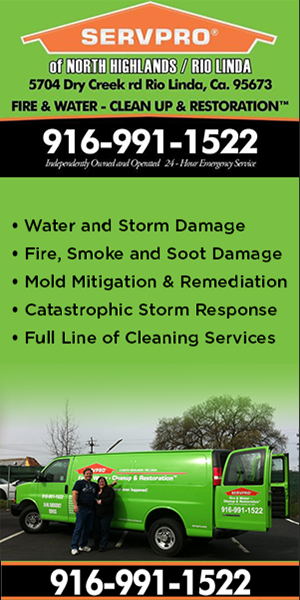Self-Isolation for Older Adults and Those Who Have Elevated Risk March 16, 2020
This guidance is based on what is currently known about the transmission and severity of coronavirus disease 2019 (COVID-19). The California Department of Public Health (CDPH) will update this guidance as needed and as additional information becomes available.
This document is intended to be statewide guidance to help older adults and individuals who are at high risk for serious illness, this includes:
- Individuals over 65 years of age
- Individuals who have serious chronic medical conditions like
- Heart disease
- Diabetes
- Lung disease
- Individuals who have compromised immune systems
This guidance does not apply to people who work in essential services, such as hospital and health care workers, pharmacists, peace officers, firefighters, staff at skilled nursing facilities and residential care facilities for the elderly, and other essential workers.

Background
COVID-19 is a respiratory illness caused by a novel virus that has been spreading worldwide. Community-acquired cases have now been confirmed in California. We are gaining more understanding of COVID-19’s epidemiology, clinical course, immunogenicity, and other factors as time progresses, and the situation is changing daily. CDPH is in the process of monitoring COVID-19, conducting testing with local and federal partners, and providing guidance and resources to prevent, detect and respond to the occurrence of COVID-19 cases in California.
At this time, community transmission of COVID-19 has occurred in California. All individuals should prepare for possible impacts of COVID-19 and take precautions to prevent the spread of COVID-19 as well as other infectious diseases, including influenza and gastroenteritis.
Illness Severity
The complete clinical picture with regard to COVID-19 is not fully understood. Reported illnesses have ranged from mild to severe, including illness resulting in death. Older people, those with compromised immune systems, and people with certain underlying health conditions like heart disease, lung disease and diabetes, for example, seem to be at greater risk of serious illness.
Measures for Older Adults and Those Who Have Elevated Risk
Individuals at elevated risk can take steps now to slow reduce the risk from infectious diseases, including COVID-19. CDPH recommends implementing the following steps:
- Remain at home until further guidance is issued.
- Cancel any non-essential travel, appointments, etc.
- For routine medical care, contact your health care provider to discuss rescheduling, if not urgent. Otherwise, discuss alternative provision of services, such as telehealth or in-home care.
- If you are in need of medical care, and in consultation with your health care provider, make an appointment and visit your provider to get the necessary care. If you have an emergency and need immediate medical care, call 9-1-1.
- Continue with outdoor activities.
- As long as you practice social distancing, we encourage you to continue your outdoor activities such as walks, runs and yard work, to the extent your health allows it.
- Practice social distancing, both in and outside the home.
- Maintain distance, at least six feet, between yourself and anyone who is coughing or sneezing.
- Avoid handshaking, hugging or other intimate types of greetings—greet others with a wave, nod or bow instead.
- Stay in touch with others by phone, email, or other online tools (like Skype and Facebook).
- Ask friends, family, neighbors, and other networks to do any essential grocery shopping, picking up medications, etc. Consider on-line ordering for food and other supplies.
- Ask for help from friends, family, neighbors, community health workers, etc. if you become sick.
- Identify friends, family, neighbors, and other networks who can provide you with care if your caregiver gets sick or otherwise adjusts their scheduled services.
- Identify Family, Friends, Neighbors, and Caregivers who can provide Support
- Family, friends, neighbors, and caregivers who come to homes to provide support should be asymptomatic, meaning having no fever, cough, or other respiratory symptoms.
- Family, friends, neighbors, and caregivers can support by knowing what medications your loved one or client is taking and seeing if you can help them have extra on hand; monitoring food and medical supplies (oxygen, incontinence, dialysis, and wound care) needed and creating a back-up plan; and stocking up on non-perishable food items to have on hand in your home.
- Have supplies on hand
- Contact your healthcare provider to ask about obtaining extra necessary medications to have on hand.
- If you cannot get extra medications, consider using mail-order for medications.
- Be sure you have over-the-counter medicines and medical supplies (tissues, etc.) to treat fever and other symptoms.
- Have a plan for if you get sick
- Consult with your health care provider for more information about monitoring your health for symptoms suggestive of COVID-19.
- Stay in touch with others by phone or email. You may need to ask for help from friends, family, neighbors, community health workers, etc. if you become sick.
- Watch for symptoms and emergency warning signs
- Pay attention to potential COVID-19 symptoms including fever, cough, and shortness of breath. If you develop symptoms, call your doctor or local public health department.
- If you develop emergency warning signs for COVID-19, get medical attention immediately. In adults, emergency warning signs* include:
- Difficulty breathing or shortness of breath
- Persistent pain or pressure in the chest
- New confusion or inability to arouse
- Bluish lips or face
- *This list is not all-inclusive. Please consult your medical provider for any other symptom that is severe or concerning.
- Practice Handwashing
- Wash hands frequently for at least 20 seconds.
- Encourage hand washing by family and friends, particularly children.
- Provide alcohol-based hand sanitizers to supplement hand washing.
- Avoid touching eyes, nose, or mouth with unwashed hands.
- Clean frequently used devices, such as mobile phones.
- Use “respiratory etiquette”
- Cover cough with a tissue or sleeve. See CDC’s Cover Your Cough page for multilingual posters and flyers, posted at the bottom of the webpage.
- Provide adequate supplies within easy reach, including tissues and no-touch trash cans.
- Clean and disinfect your home to remove germs: practice routine cleaning of frequently touched surfaces (for example tables, doorknobs, light switches, handles, desks, toilets, faucets, sinks & cell phones) with common cleaning supplies
- See the Center for Disease Control and Prevention’s guidance regarding the prevention of disease in homes and residential communities.
















